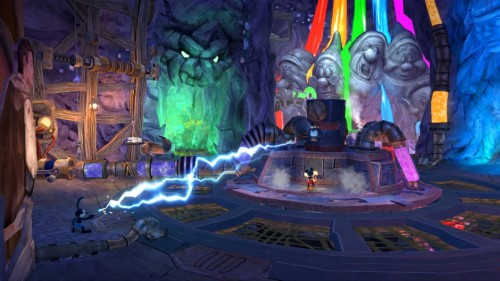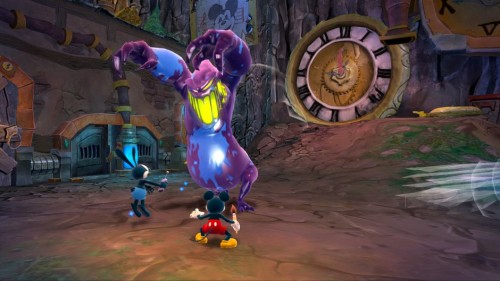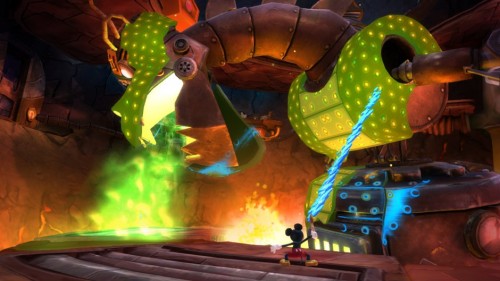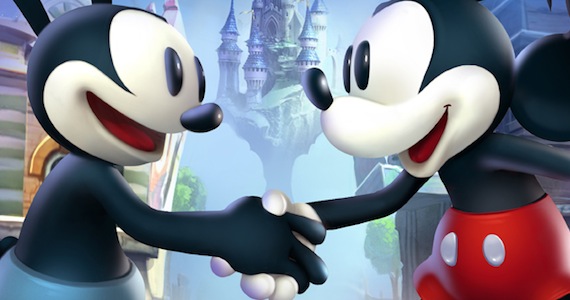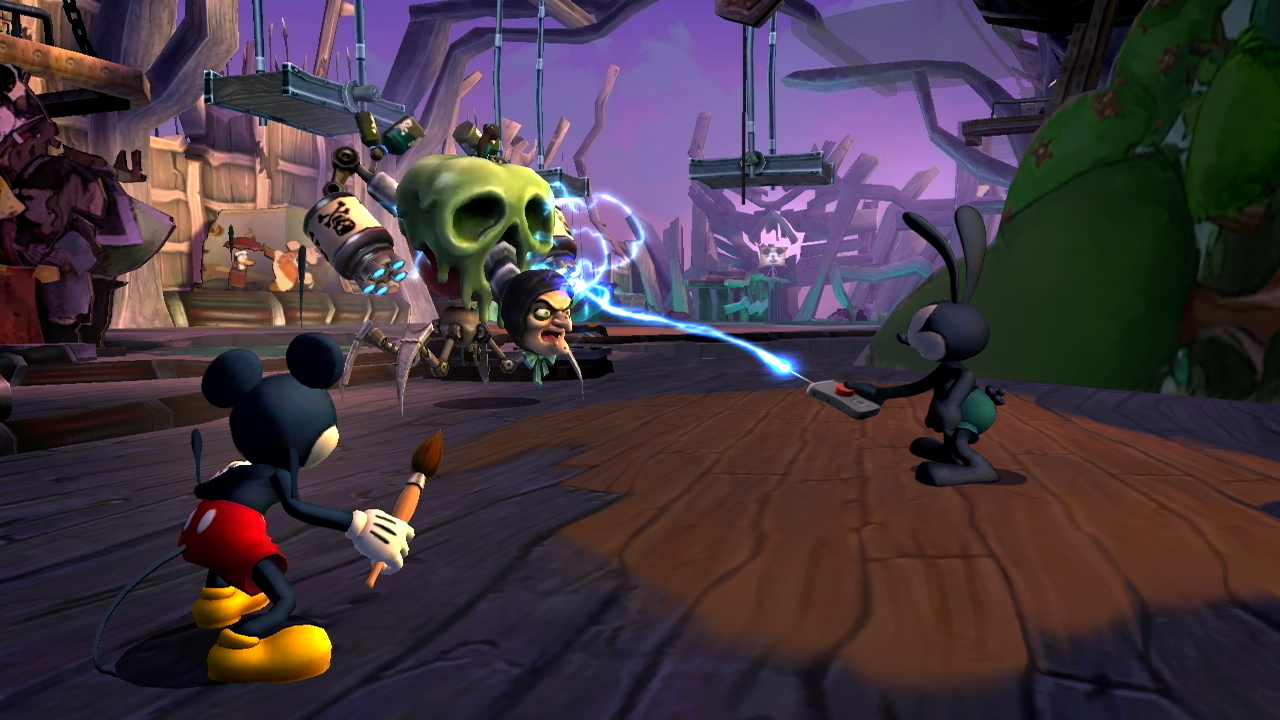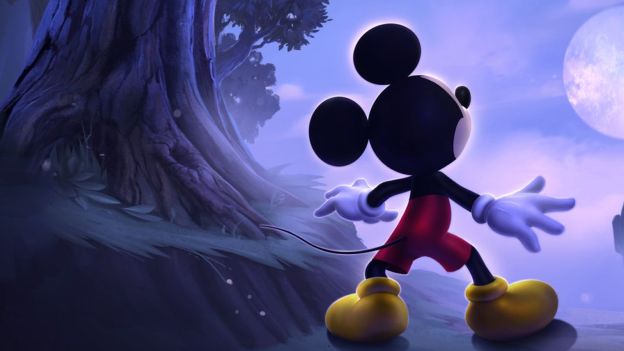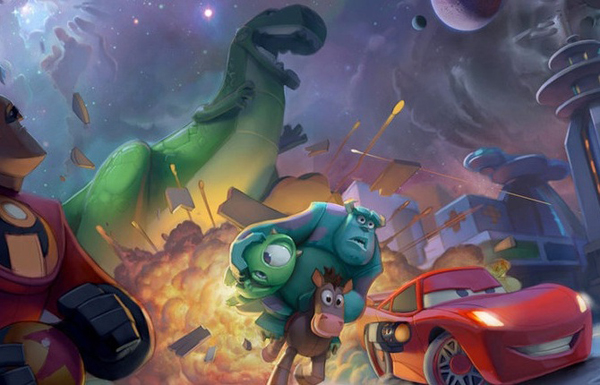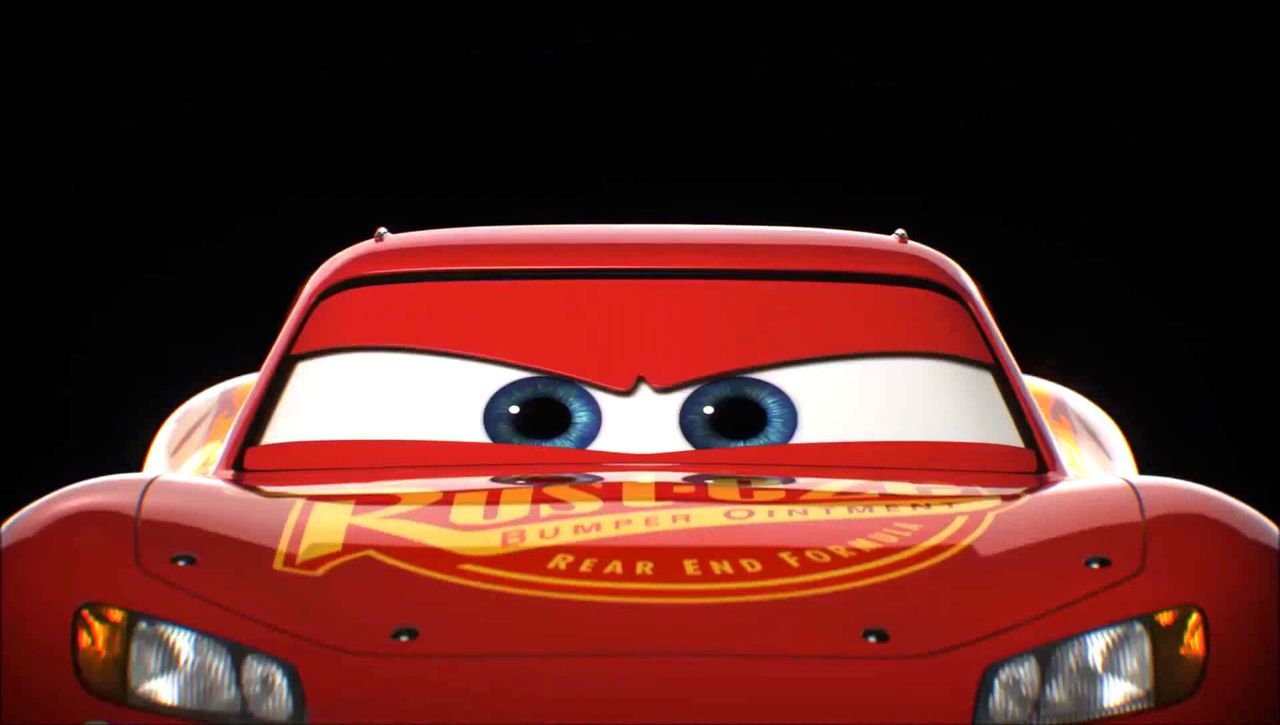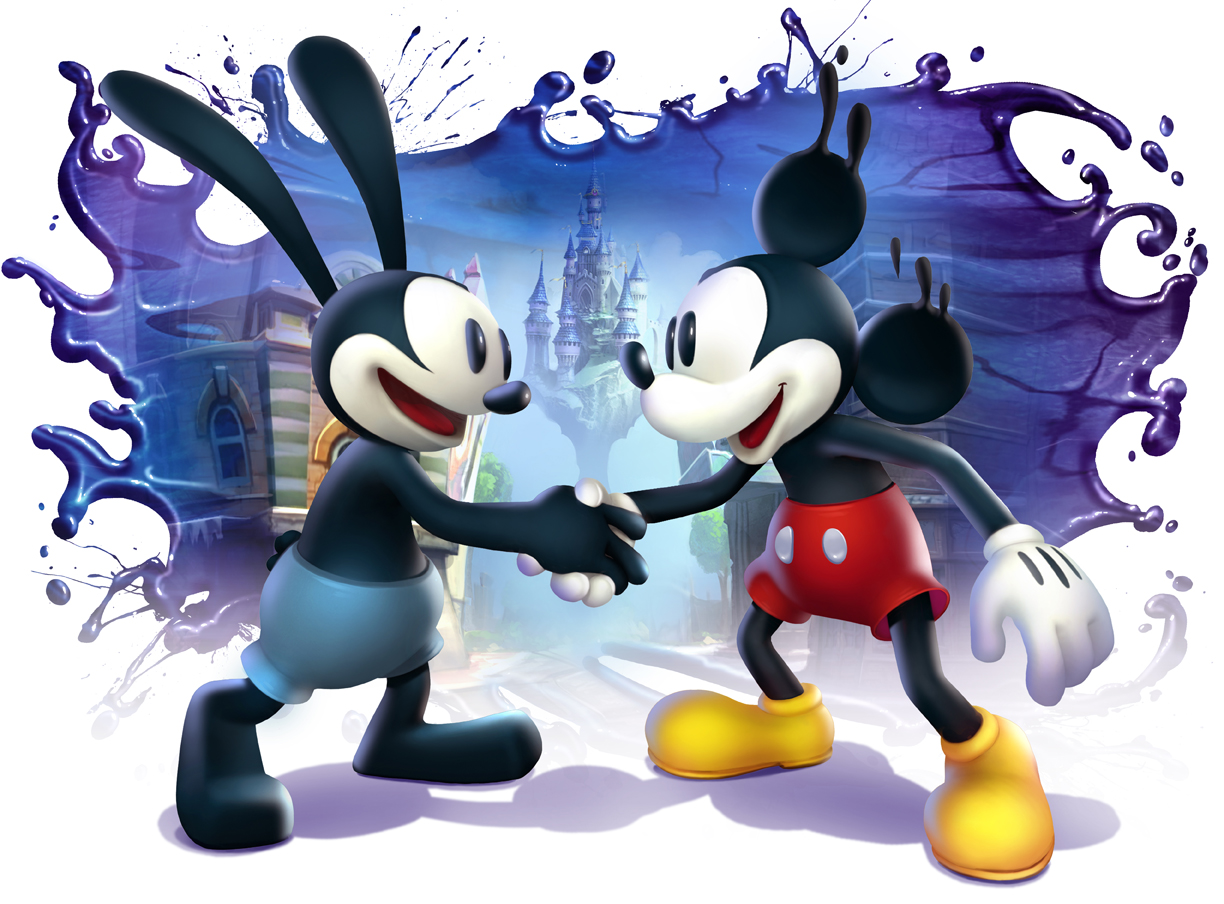
The original Epic Mickey is somewhat of a sore spot for me, due in part to my admittedly absurd anticipation for what I hoped to be a return to form for Disney interactive properties. Warren Spector attached to the project was a catalyst for the hype, his subsequent interviews and commentary, so eloquently identifying Disney’s missteps with Mickey Mouse, and bold vision for his imaginative Wasteland, had me well and truly convinced this would be the Disney game to put the acclaimed animation studio back on the map.
And though Epic Mickey would handle Disney’s bottomless archive of material with a degree of respect and creativity that would make any Disney fan weep with joy, how disappointed I would be to discover that juggling these properties is about all Epic Mickey did well. As a homage to Disney, Epic Mickey was glorious, inventive, and beautiful. But as a video game? Dull, repetitive missions through uninspired level design, and a bucket full of control frustrations mangled the project from an interactive Disney dream to a collect-a-thon nightmare.
Leading up to Epic Mickey 2: The Power of Two, direct sequel to the original, I can’t say I was too excited. The burn of Epic Mickey was deep, and had lingered. But in true Disney fashion I wanted to believe. I wanted to have faith that this could be the Epic Mickey title that picks up the slack in the gameplay department. And in some ways, it does. But in many ways it doesn’t, and so again I’m left disappointed.
Let’s kick off with the good. Right off the bat, evidence of Junction Point’s learnings from Epic Mickey‘s mistakes are apparent from the moment you gain control. Note that, control. Epic Mickey wrestled with clumsy-to-terrible camera and aiming control with Nintendo’s Wii Remote, issues easily solved by a tweakable bounding box that never existed. For Epic Mickey 2 I played on the PlayStation 3 with a standard pad. To claim rotating the camera is easier would be an understatement. Now it actually works quite well. Though it’s still tied to bounding box situated in front of Mickey, used to direct his painting abilities in the immediate vicinity, the size of this bounding box is far, far smaller. Epic Mickey 2 also supports PlayStation Move, and though I didn’t get a chance to go hands on with Sony’s waggle wand, the smaller bounding box compared to its predecessor gives me confidence the peripheral would work quite well.
As per the name, The Power of Two introduces co-operative play to the formula. Where Epic Mickey was a solo adventure, the sequel is best played as both Mickey and Oswald. Each have their own abilities: Mickey the magical paintbrush, and Oswald an electronic remote device…thing, used for activating switches. Oswald is not optional. Even while playing solo he will tag along for the adventure. I was pleasantly surprised to see Oswald’s AI keep up with the action. It’s not outstanding, and he doesn’t add much to the encounters, but he managed to keep up with my play speed and that’s the most important thing. Important because Oswald is more than a clone of Mickey. Outside of the paint/remote difference, Oswald is a necessity for making your way through the game, using his ears as propellers for instance in order to aid Mickey in bridging a large gap. It’s nice that Junction Point put thought into the co-operative play, as puzzles frequently require the combined abilities of both characters, thus encouraging active teamwork, rather settling on a bland double up of Mickey.
Then there’s the graphics. I always thought Epic Mickey looked good, if a little washed out, even with the Wii’s limitations. Disney’s art remains among the best in the animation world, and Junction Point’s artistic creativity has always been a high point. Epic Mickey 2 is just like the original, only better, naturally enhanced by the processing power of current generation systems. Framerate is mostly pretty stable, certainly above the Wii’s, and the environments look gorgeous. Junction Point has made some tremendous use of colours and tones, picking bright, vibrant inky liquids to contrast on darker backgrounds. The exaggerated ’toon’ perspective dominates towns, caverns, characters, and more or less everything else, giving the game world a lively and very distinct Disney feel. As with Epic Mickey, Junction Point has also sourced assorted Disney memorabilia and iconography, much of which shows up during the side scrolling stages. This, again, feels like a trip through a Disney archive, only better thanks to being unshackled from the Wii’s processing restrictions. It’s a lovely, clean, and vibrant looking game to be sure.
And then we get to the bad. Though Junction Point have done their best to improve on and expand the above, it’s heartbreaking to see Epic Mickey 2 succumb to almost all of the same grievances that plagued the original game, with a few additional errors that feel like steps backwards.
Epic Mickey 2 is, like the original, dull to play. Though scattered traps and obstacles attempt to liven up stages, level design usually consists of a monotonous slug from point A and to point B. And in between these two points you’ll find yourself pushed into clumsy pain/thinner based combat against enemies no less or more exciting to fight than the predecessor. Epic Mickey‘s reliance on paint and thinner in fights seemed counter intuitive to fun, and Epic Mickey 2 isn’t much different. Expect to do a lot of pointing and spraying. Oswald’s electro shock device attempts to liven up fights, mostly to open weaknesses for Mickey’s paint/thinner, but the enemies themselves are so erratically animated and miss-designed that no solution is found to the absence of fun. If Epic Mickey 3 is to happen, Junction Point need to build an entirely new combat system to spark better encounters and more interesting fights.
Expect do a lot of collecting, just like Epic Mickey. Fetch this, collect these goodies, and return for a small reward. Epic Mickey 2 relies on the artificial game extending that plagued so many Nintendo 64 era platformers, wherein there’s just so much to collect and acquire, from tickets to costume pieces, that it’s hard to believe the game is about anything else. For the OCD gamer who gets a thrill out of ticking boxes, this will all probably sound great. For everybody else though, Epic Mickey 2 fails to offer lively game design that encourages you to push forward to discover interesting mechanics and gameplay challenges, instead riding off the back of more collectables and other junk.
Treading the same path of faults that Epic Mickey did is one thing to be disappointed about. Taking a step backwards is another. And Epic Mickey 2 does this in the themes and presentation of the game, of all things. For the disappointment that Epic Mickey was, one of the most enduring qualities was Junction Point’s incredible vision of a somewhat unsettling, not-quite-right alternate Disney wonderland. Though still family friendly, Epic Mickey played with themes of loneliness, abandonment, and the darker side of Disney’s forgotten properties. Strangely, Epic Mickey 2 is far more upbeat, littered with musical numbers and peachy, voiced dialogue for most of the cast, replacing the mute, animation driven story telling of the original. On paper, this is an objective production improvement. In practice, the charm of Epic Mickey is replaced by cheesy, drawn out dialogue and a frustrating focus on simplistic, childish humour. Warren Spector’s vision with Epic Mickey was to return Mickey to his mischievous roots, in a world with themes relatable to people of all ages. Epic Mickey 2, on the other hand, feels more focus tested towards younger audiences. Will they enjoy it? Maybe, but for older gamers after a little more than a prime time Disney adventure, something which Epic Mickey accomplished, Epic Mickey 2 is quite a downgrade.
And so, once all is said and done, I find myself feeling similar about Epic Mickey 2 as I did Epic Mickey. Yeah, there’s good ideas there, the co-op approach in particular standing out. And it looks great, as Junction Point prove they’ve still got a mastery over Disney’s properties. There’s plenty of adventures to go, the mechanics work as intended, and the abundance of collectables are sure to extend playtime quite far for the most obsessive Disney fans.
But it’s still oh so dull to play, and wrought with monotonous trips through bland levels that don’t seem to offer much beyond the most basic platforming fundamentals of switches, ravines, and moving obstacles. Epic Mickey 2 even drags across some of the rougher aspects of Epic Mickey‘s platforming. Mickey’s collision detection still doesn’t feel quite right, his jumping and collision still floaty and most evident in the 2D sections. Even with the improvements mentioned earlier, Epic Mickey 2 draws a lot of design influence from the original game. And when so much of that design needed improvement to excite and amaze as an interactive adventure, Epic Mickey 2 unsurprisingly trips into the same potholes.
This leads me to recommending Epic Mickey 2: The Power of Two much in the same way that I recommended Epic Mickey: if you’re a massive Disney fan keen to see Disney’s properties, especially a lot of the older stuff, re-imagined and bought to life with gorgeous art and animation, and aren’t too fussed with the game said art is wrapped around as long said game works, then Epic Mickey 2 is a fairly solid adventure. And if you fall into this category I recommend you grab an equally cluey Disney fan to jump in for the co-op to enjoy the ride, as that’s the best experience you’ll get. But if Disney iconography isn’t enough, and you’re after a truly engaging, outstanding platforming adventure, then Epic Mickey 2 sadly warrants no more attention than the original.
Smart co-op ideas | Gorgeous art | Improved controls
Dull, monotonous design | Over-reliant on collectables | Childish focus

